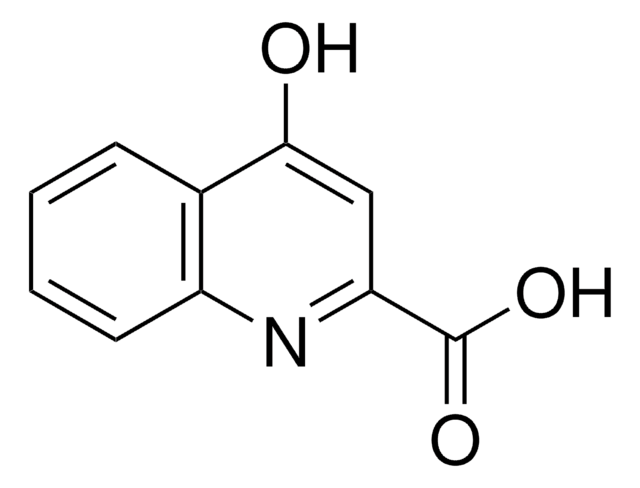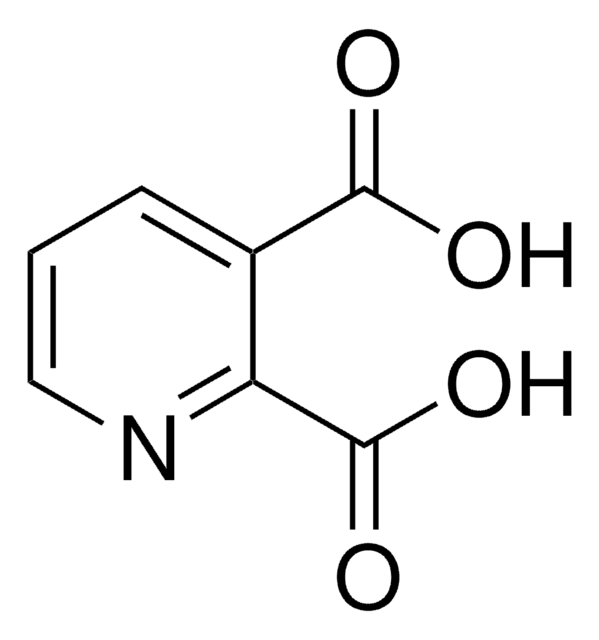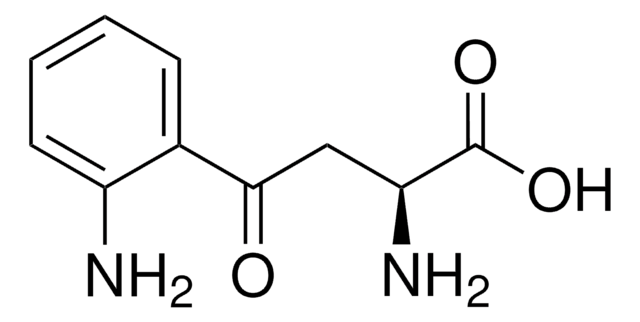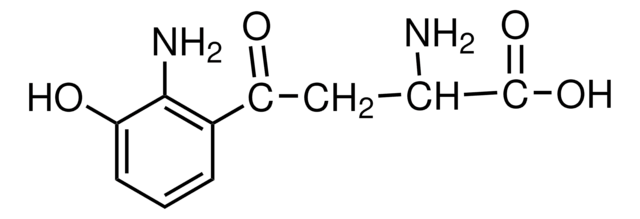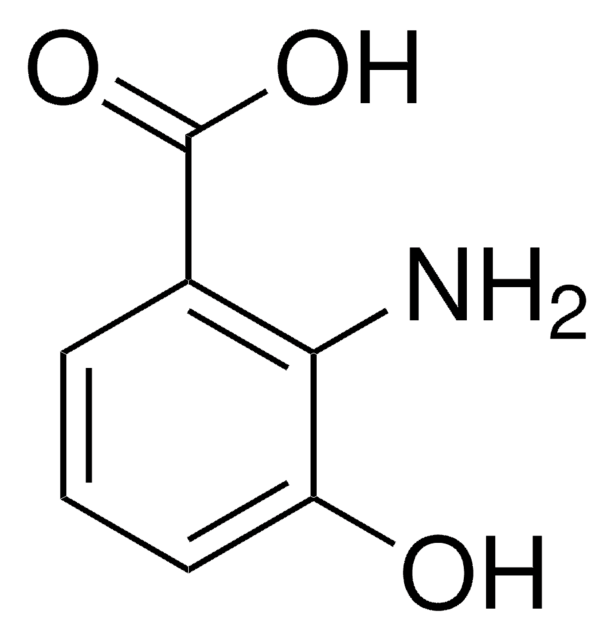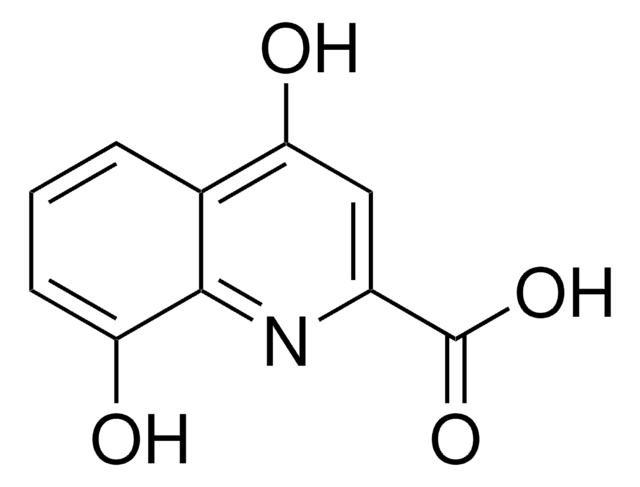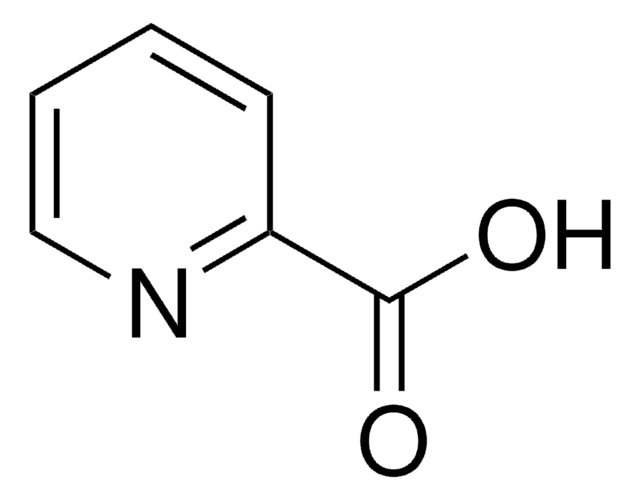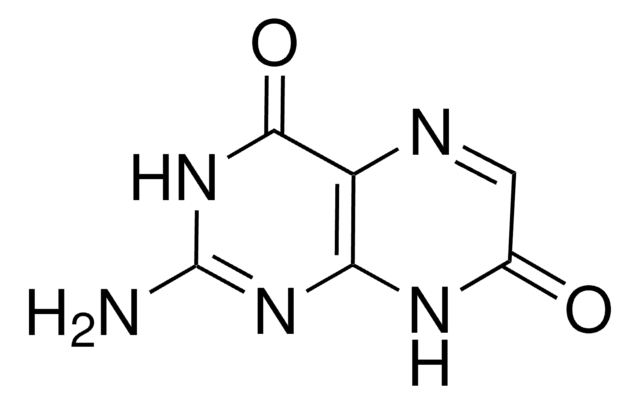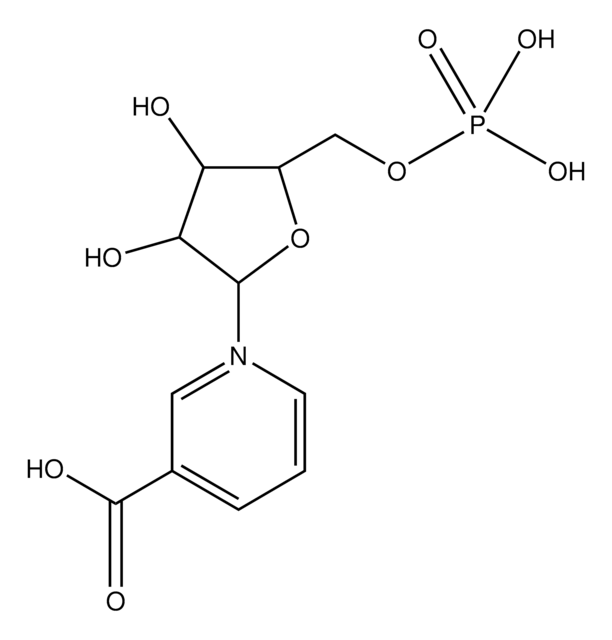推荐产品
SMILES字符串
OC(=O)c1cccnc1C(O)=O
InChI
1S/C7H5NO4/c9-6(10)4-2-1-3-8-5(4)7(11)12/h1-3H,(H,9,10)(H,11,12)
InChI key
GJAWHXHKYYXBSV-UHFFFAOYSA-N
可比产品
产品编号
说明
价格
警示用语:
Warning
危险声明
预防措施声明
危险分类
Eye Irrit. 2 - STOT SE 3
靶器官
Respiratory system
储存分类代码
13 - Non Combustible Solids
WGK
WGK 3
闪点(°F)
Not applicable
闪点(°C)
Not applicable
个人防护装备
dust mask type N95 (US), Eyeshields, Gloves
法规信息
新产品
Gilles J Guillemin et al.
Neuro-degenerative diseases, 2(3-4), 166-176 (2006-08-16)
The kynurenine pathway (KP) is a major route of L-tryptophan catabolism leading to production of several neurobiologically active molecules. Among them is the excitotoxin quinolinic acid (QUIN) that is known to be involved in the pathogenesis of several major inflammatory
Valéry Combes et al.
Trends in parasitology, 28(8), 311-319 (2012-06-26)
Homeostasis implies constant operational defence mechanisms, against both external and internal threats. Infectious agents are prominent among such threats. During infection, the host elicits the release of a vast array of molecules and numerous cell-cell interactions are triggered. These pleiomorphic
Gilles J Guillemin
The FEBS journal, 279(8), 1356-1365 (2012-01-18)
Over the last two decades, evidence for the involvement of quinolinic acid (QUIN) in neuroinflammatory diseases has been exponentially increasing. Within the brain, QUIN is produced and released by infiltrating macrophages and activated microglia, the very cells that are prominent
Apsara Kandanearatchi et al.
The FEBS journal, 279(8), 1366-1374 (2012-01-21)
This brief review will first consider HIV associated neurocognitive disorder followed by the current understanding of its neuropathogenesis. Against this background the role of the kynurenine pathway will be detailed. Evidence both direct and indirect will be discussed for involvement
F Moroni et al.
Journal of neurochemistry, 47(6), 1667-1671 (1986-12-01)
Quinolinic acid (QUIN), an excitotoxic tryptophan metabolite, has been identified and measured in human cerebrospinal fluid (CSF) using a mass-fragmentographic method. Furthermore, its content has been evaluated in frontal cortex obtained at autopsy from the cadavers of patients who died
我们的科学家团队拥有各种研究领域经验,包括生命科学、材料科学、化学合成、色谱、分析及许多其他领域.
联系技术服务部门